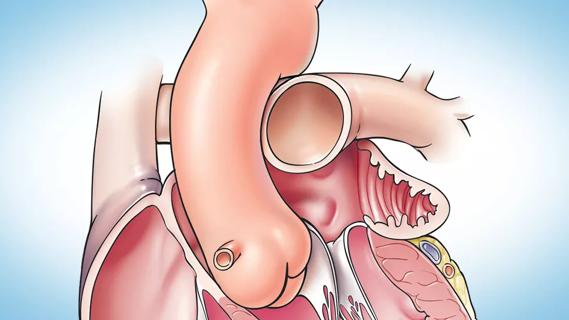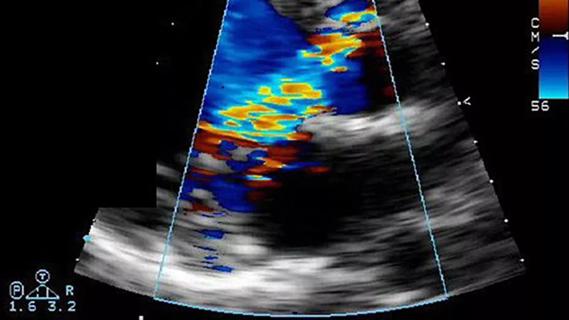Advertisement
Delays in surgery for women demand sex-specific referral considerations

Women continue to undergo cardiac surgery at a later stage of disease than men do, and referral for cardiac surgery needs to become far more sex-specific.
Advertisement
Cleveland Clinic is a non-profit academic medical center. Advertising on our site helps support our mission. We do not endorse non-Cleveland Clinic products or services. Policy
Those are two essential takeaways from the first published review of sex differences across a broad range of cardiac surgery procedures, according to lead author Leslie Cho, MD, Director of Cleveland Clinic’s Women’s Cardiovascular Center. The review, “Cardiac Surgery in Women in the Current Era: What Are the Gaps in Care?” was published in Circulation (2021;144:1172-1185)
“Our review found that women are coming to surgery later than men, whether for heart valve surgery, aorta surgery or coronary artery bypass,” says Dr. Cho. “The reasons are multifactorial, but regardless of the cause, women are getting surgery later, and that contributes to the persistence of poorer outcomes in women.”
Just how stark those outcome differences can be sometimes surprises even an expert like Dr. Cho. “The published data show that even though women account for only 30% of cases of thoracic aortic aneurysms,” she says, “women are three times more likely to have an aneurysm dissect or rupture than men are, and they are 40% more likely to die as a result. This divergence in outcomes is striking, and it underscores the importance of making management gender-sensitive.”
The review, developed by a multicenter team for the American College of Cardiology’s Cardiovascular Disease in Women Committee Leadership Council, covers a broad scope of issues:
It documents continued underrepresentation of women in research in cardiovascular disease ranging from a preponderance of basic science studies using male-only cell lines to enduring challenges in enrolling women in cardiac surgery clinical trials.
“It’s well established that women have differences in cardiovascular symptoms, drug metabolism and treatment response compared with men,” Dr. Cho says. “Therefore, the enduring lack of equity between the sexes in clinical and basic research results in knowledge gaps in how to most effectively manage disease in women, especially in the surgical arena.”
The detailed surveys of sex-related issues in CABG, aorta surgery and valve surgery identify a number of recurring challenges across all surgery types.
One is the need for earlier referral and intervention in women. “Women with cardiac disease often present later in their disease course, which complicates evaluation and management,” says review co-author and Cleveland Clinic pediatric cardiothoracic surgeon Tara Karamlou, MD, MSc. She notes that referral bias likely plays a part, as do traditional gender roles. “Women often juggle multiple roles, including the role of primary caregiver, which can compromise their ability to seek timely care for themselves.”
Advertisement
Another challenge across surgery types is the need for more representation of women in clinical surgery trials — and for studies of differences in between men and women in surgical management and outcomes. Review co-author and Cleveland Clinic cardiothoracic surgeon Faisal Bakaeen, MD, speaks to this from his specialty focus on CABG. “The precise reasons for differences in outcomes after CABG between men and women are unknown and likely multifactorial,” he says. “They may include the fact that women tend to have more comorbidities, more-acute presentations, smaller coronary arteries and delayed diagnosis. Referral bias is likely a factor as well. It is also possible that differences in operative strategy for CABG in men and women may contribute to worse outcomes in women.” He notes that these include differences in choice of conduit, use of cardiopulmonary bypass and completeness of revascularization.
An additional challenge common to all surgery types is that referral is too often based strictly or predominately on male criteria. “It’s important for physicians not to use the same criteria for surgery referral in men and women, due to differences in size and physiology between the sexes,” Dr. Cho says.
She notes that the need for sex-specific criteria is better recognized for some types of cardiac surgery than for others. For instance, guidelines for aortic valve surgery have been revised in recent years to account for differences in typical body (and valve) size between men and women. “Despite growing evidence that we should be using more gender-specific thresholds for mitral valve surgery as well,” Dr. Cho says, “no similar guideline changes have been made for mitral valve procedures. Across the board, surgical criteria should be more mindful of sex differences. It’s fundamental to any move toward more personalized medicine.”
Dr. Cho says greater mindfulness about tailoring surgical referral considerations to the patient’s sex is her top recommendation for closing gaps in care at the individual provider level. The review posits a number of additional solutions that apply more at a systems level, including development of sex-based algorithms for timely diagnosis, risk stratification, monitoring and referral for surgery.
Other recommendations include enrolling more women in cardiac surgery trials, more widespread reporting of sex-based treatment impacts in study reports, and further investigation of the mechanisms of sex differences in both basic and clinical research. These recommendations overlap considerably with those proposed in another recent major multicenter publication led by Dr. Cho, a JACC Council Perspectives article in the Journal of the American College of Cardiology (2021;78:737-751) outlining eight ways to increase women’s participation in cardiovascular trials.
Among those recommendations is a call for greater inclusion of women in trial leadership and cardiovascular care in general. That’s a sentiment shared by Dr. Karamlou. “Paradigms to improve cardiovascular care and access for women specifically must be comprehensive and should include education and ascendency of women in medicine,” Dr. Karamlou concludes.
Advertisement
Advertisement

TAVR explant demands multidisciplinary expertise

How two of our surgeons are working for care equity, greater representation in research and practice

Judicious application yields a 99.7% repair rate and 0.04% mortality

Large single-center series demonstrates safety and efficacy for extending procedure

Preoperative Impella 5.5 placement can provide a critical safety net for high-risk patients

Cleveland Clinic study points to need for new strategies to curb addiction relapse

Concomitant AF ablation and LAA occlusion strongly endorsed during elective heart surgery

Residual AR related to severe preoperative AR increases risk of progression, need for reoperation